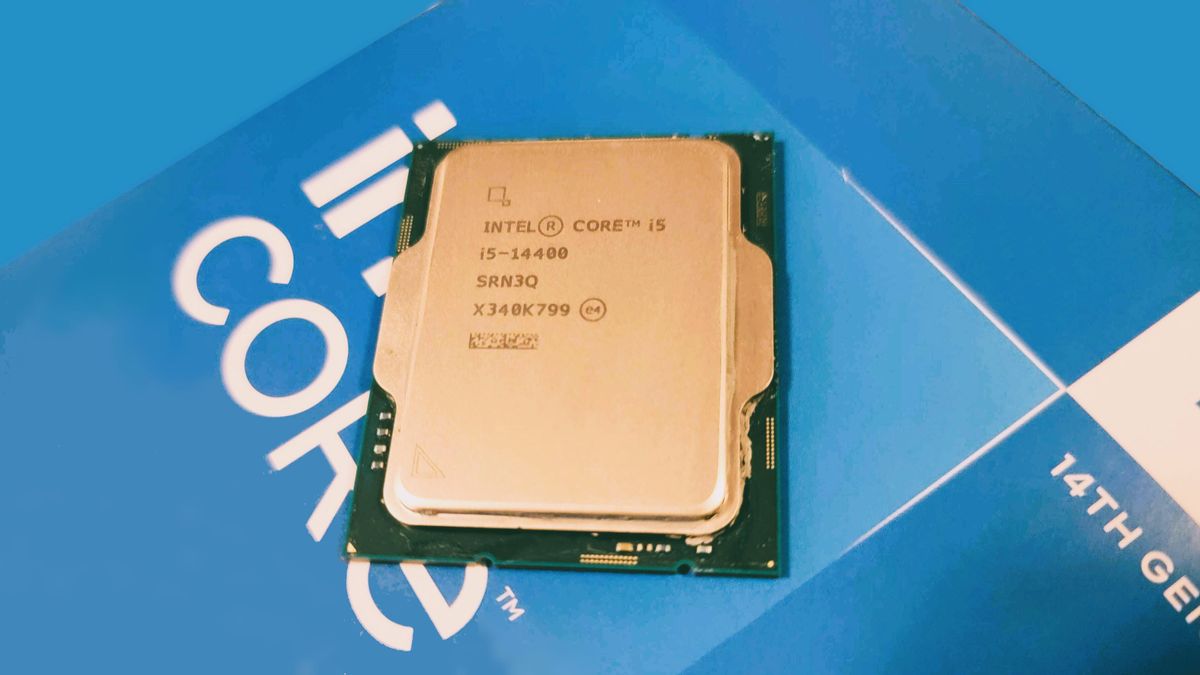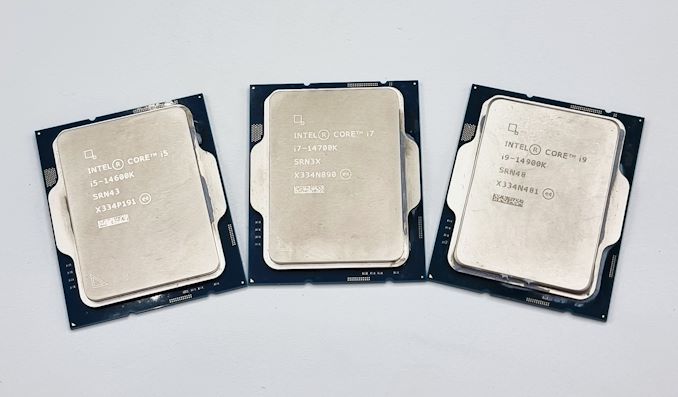I'm saying the REACH of the issue is being overblown. The chips experiencing these issues mostly seem to just be the ones being pushed to stupid levels. Surprise surprise.I think the issue is underblown. Instability is worse than total failure. I would rather a CPU completely die on me than have it experience periodic instability, throwing up misleading errors and getting worse over time.
You are using an out of date browser. It may not display this or other websites correctly.
You should upgrade or use an alternative browser.
You should upgrade or use an alternative browser.
The Intel Execution in [2024]
- Thread starter Shifty Geezer
- Start date
- Status
- Not open for further replies.
That's not what the investigations have found - conservatively clocked chips in servers set up for maximum durability are also dying in notable numbers. One would expect higher clocks to exacerbate problems and record more issues are higher clocks, but if that was the cause, there shouldn't be any problem in the servers AFAICS.I'm saying the REACH of the issue is being overblown. The chips experiencing these issues mostly seem to just be the ones being pushed to stupid levels. Surprise surprise.
Well I'd guess it's the voltages, not clocks, that are causing the problems. You increase voltage to help increase clock ceilings, but you can pump a ton of voltage while running lower clocks, too. I mean, this is exactly why 'automatic overclocking' on motherboards was often such a bad idea for a long time there cuz it would just skyrocket voltages well above what they needed to be for a given clock increase.That's not what the investigations have found - conservatively clocked chips in servers set up for maximum durability are also dying in notable numbers. One would expect higher clocks to exacerbate problems and record more issues are higher clocks, but if that was the cause, there shouldn't be any problem in the servers AFAICS.
And I'm not saying there are no issues at all outside the ultra juiced parts, just that seems to be where the vast bulk of problems lie, and that's clearly not any coincidence. All Raptor Lake parts are being juiced fairly hard, but the 900k parts obscenely so.
How is CPU voltage influenced by mobo? Are the servers getting more voltage than necessary? I'm assuming these are voltaged as low as possible to save running costs. Can the CPU itself request more V than warranted?
yeah whatever the gen 15 will be called. the ones made by TSMC. or its only the mobile version that will be made by TSMC?You mean 2nd gen, desktop is jumping to Core Ultra boat too
DavidGraham
Veteran
Intel is saying that there are multiple problems giving rise to the instability issue, key factor among them is the microcode voltage problem, but there is also the "via Oxidation manufacturing issue", and possible other issues. The microcode voltage problem is not the only issue, and I don't expect the instability problem to completely go away after this.
This is a failure of epic proportions, Intel got wind of the issue back in Feb, yet they kept silent on it, worse yet they initially and wrongly blamed motherboard power profiles, knowing full well there is a deeper underlying issue at play here, an issue that affected their CPUs from 2 years ago!
Intel kept milking the underlying arch of 12th gen CPUs for two more gens (13th and 14th), each time pushing power, voltage, and heat to previously unprecedented levels, and now it's catching up to them in a hard way, I don't understand how a company as big and as old as Intel can screw up this hard. It's the first time in my life that I have seen CPUs fail so hard and crash so often.
We can confirm that the via Oxidation manufacturing issue affected some early Intel Core 13th Gen desktop processors ... the analysis to-date has determined that only a small number of instability reports can be connected to the manufacturing issue.
For the Instability issue, we are delivering a microcode patch which addresses exposure to elevated voltages which is a key element of the Instability issue
This is a failure of epic proportions, Intel got wind of the issue back in Feb, yet they kept silent on it, worse yet they initially and wrongly blamed motherboard power profiles, knowing full well there is a deeper underlying issue at play here, an issue that affected their CPUs from 2 years ago!
Intel kept milking the underlying arch of 12th gen CPUs for two more gens (13th and 14th), each time pushing power, voltage, and heat to previously unprecedented levels, and now it's catching up to them in a hard way, I don't understand how a company as big and as old as Intel can screw up this hard. It's the first time in my life that I have seen CPUs fail so hard and crash so often.
Last edited:
I dont think it's hard to speculate that some companies(especially smaller ones) might take a more plug'n'play approach. And voltage control has always had some level of 'looseness' to it, which is why you'll have Vdroop controls and all that to try and prevent spikes of overvoltage. If these things aren't all working entirely as expected, or if Intel had simply underestimated the level of control required, it could definitely result in instability issues. And even if you are undervolting to optimize efficiency, faults in voltage control would easily cause instability issues as well.How is CPU voltage influenced by mobo? Are the servers getting more voltage than necessary? I'm assuming these are voltaged as low as possible to save running costs. Can the CPU itself request more V than warranted?
It just seems like the most simplest, obvious explanation to me. I'm not an expert, but I think it would also be an extremely extraordinary case if there were literally some kind of more intrinsic design fault or something else causing it. And it should be no coincidence that it's happening to a line of chips that are probably being pushed harder stock than any other CPU's we've ever seen and that most of the complaints seem to be coming from the 900k series parts specifically(which are literally the same silicon as most other Raptor Lake CPU's).
And I think a lot will made of other, minor issues that can affect most any other chip. Stuff that will get included in the data despite it not really being a part of the real issue.
DavidGraham
Veteran
There's nothing 'unbelievable' about this. It's stating the bleeding obvious - that you cant repair a physically deteriorated chip via software. But it could absolutely prevent issues for any existing users that haven't experienced any kind of impactful deterioration or issues.
And yes, the implication is very much that Intel will replace affected processors, as should have also been obvious from the start of all this.
DegustatoR
Legend
That's expected. If the issue was leading to instability over time then it means that these CPUs are "fried" now and will have to be replaced.
digitalwanderer
Legend
Wendell covered that a couple of weeks ago in his video but it looks like he overestimated the ones that could be fixed by a microcode update by 50%, he thought half of them would be saveable.
Looks like it's oxidation in the VIAs and there ain't no good/easy way to fix that. I agree the way Intel handled it has been beyond awful up until now but I'm really curious to see how they deal with it now that it's out in the open and the fecal matter has collided with the rotors of the air moving mechanism.
arandomguy
Veteran
Do you specifically mean nonK CPUs with K variants from I guess "major" outlets? Otherwise I dont think that is correct.Fun fact: there are ZERO reviews online of non-K(F/S) CPUs from 13/14th series.
xx600 and higher can be harder to find due to the naming and popularity of the K reviews.
Intel is saying the oxidation thing is not a major problem and only affected a small number of chips. I understand problems happen, but if they are lying I think I will stop using, selling, and recommending Intel products. Gamer's Nexus is working on finding out.Wendell covered that a couple of weeks ago in his video but it looks like he overestimated the ones that could be fixed by a microcode update by 50%, he thought half of them would be saveable.
Looks like it's oxidation in the VIAs and there ain't no good/easy way to fix that. I agree the way Intel handled it has been beyond awful up until now but I'm really curious to see how they deal with it now that it's out in the open and the fecal matter has collided with the rotors of the air moving mechanism.
In any case, there should be about zero affected chips that haven't already degraded at least a bit. If they expect a microcode update to make this go away then LOL.
DegustatoR
Legend
I mean anything but K versions. There are no reviews for them. They are completely ignored by the media.Do you specifically mean nonK CPUs with K variants from I guess "major" outlets? Otherwise I dont think that is correct.
I mean anything but K versions. There are no reviews for them. They are completely ignored by the media.
Not completely.

Intel Core i5-13400F Review - Force of Efficiency
The Intel Core i5-13400F is only $200, but comes with six Performance Cores and four E-Cores, bringing the total thread count to 16. Performance is good, as expected, but what's even more impressive is the energy efficiency as confirmed by the detailed testing in our review.

Intel Core i5-14400 Review: Intel's value gaming chip falls behind AMD
The Intel 7 refresh train chugs along.
DegustatoR
Legend
Both of these don't have the K variants.Not completely.
Both of these don't have the K variants.
Oh you meant non-K chips with K variants are ignored? Yeah that seems to be the case. Maybe there’s no interest in those from the DIY segment.
DegustatoR
Legend
Exactly. Which is all sorts of weird because these can in fact be interesting for gaming purposes.Oh you meant non-K chips with K variants are ignored? Yeah that seems to be the case.
arandomguy
Veteran
You can find them but I'm guessing just not from what you consider the typical/staple? tech outlets.
It's more that from a DIY perspective they aren't that useful.
Pricing wise in most major regions they may not be significantly cheaper if at all (more expensive in some cases) despite what the official MSRPs may suggest. This is because of how street prices are set and things like channel rebates/promos focusing on certain SKUs. Which means in practice for recent generations the retail DIY SKUs that make sense to consider (due to real pricing and availability) are the xx100/f, xx400/f, xx600k/f, xx700k/f, xx900k/f.
The lower TDP isn't very useful as modern motherboards for the most part you can set a lower TDP if you wish. You can turn a K version to a non K, but not the other way around as the clock speeds are locked for the non-K.
Another issue is that system agent voltage on the non-Ks are locked as well and lower, so the memory speeds/timings they support are not as robust as the K versions.
The included bare minimum heatsink isn't really a selling point to DIY.
Oh you meant non-K chips with K variants are ignored? Yeah that seems to be the case. Maybe there’s no interest in those from the DIY segment.
Exactly. Which is all sorts of weird because these can in fact be interesting for gaming purposes.
It's more that from a DIY perspective they aren't that useful.
Pricing wise in most major regions they may not be significantly cheaper if at all (more expensive in some cases) despite what the official MSRPs may suggest. This is because of how street prices are set and things like channel rebates/promos focusing on certain SKUs. Which means in practice for recent generations the retail DIY SKUs that make sense to consider (due to real pricing and availability) are the xx100/f, xx400/f, xx600k/f, xx700k/f, xx900k/f.
The lower TDP isn't very useful as modern motherboards for the most part you can set a lower TDP if you wish. You can turn a K version to a non K, but not the other way around as the clock speeds are locked for the non-K.
Another issue is that system agent voltage on the non-Ks are locked as well and lower, so the memory speeds/timings they support are not as robust as the K versions.
The included bare minimum heatsink isn't really a selling point to DIY.
DegustatoR
Legend
- Status
- Not open for further replies.
Similar threads
- Replies
- 3
- Views
- 1K
- Replies
- 8
- Views
- 887
- Replies
- 41
- Views
- 3K
- Replies
- 101
- Views
- 9K
- Replies
- 28
- Views
- 3K


